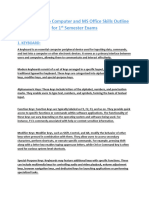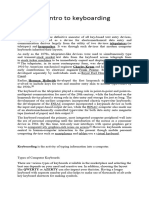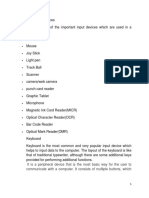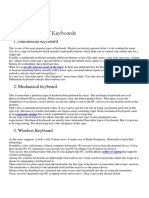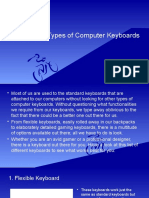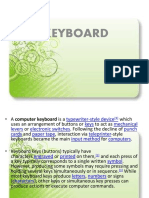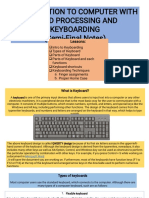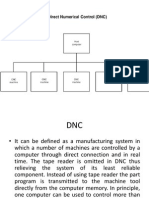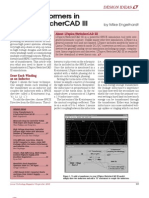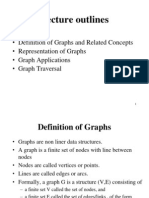0% found this document useful (0 votes)
71 views21 pagesInput Devices of Computer With Images
Input devices are peripherals that allow users to provide data to a computer system, which is then processed by the CPU. Common input devices include keyboards, mice, and scanners, each with various types and advantages such as ergonomic designs, wireless connectivity, and specialized features for gaming. Keyboards, for instance, come in various forms like QWERTY, mechanical, and membrane, each offering unique benefits for different user needs.
Uploaded by
sidrarahman014Copyright
© © All Rights Reserved
We take content rights seriously. If you suspect this is your content, claim it here.
Available Formats
Download as DOCX, PDF, TXT or read online on Scribd
0% found this document useful (0 votes)
71 views21 pagesInput Devices of Computer With Images
Input devices are peripherals that allow users to provide data to a computer system, which is then processed by the CPU. Common input devices include keyboards, mice, and scanners, each with various types and advantages such as ergonomic designs, wireless connectivity, and specialized features for gaming. Keyboards, for instance, come in various forms like QWERTY, mechanical, and membrane, each offering unique benefits for different user needs.
Uploaded by
sidrarahman014Copyright
© © All Rights Reserved
We take content rights seriously. If you suspect this is your content, claim it here.
Available Formats
Download as DOCX, PDF, TXT or read online on Scribd
/ 21

